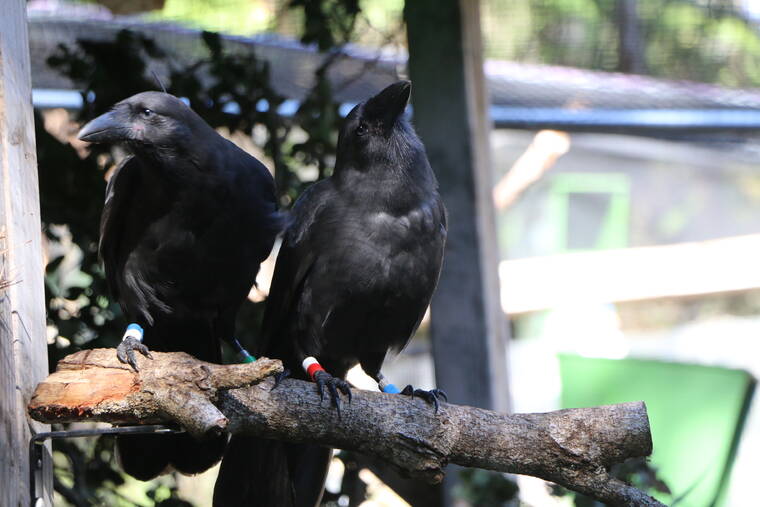First captive-bred Hawaiian crows released into Maui forest

COURTESY DLNR
Five captive-raised Hawaiian crows, or alala, were released into a Maui forest reserve, marking a milestone. They are part of a pilot project, and the first crows released outside of Hawaii island.
For the first time in decades, five Hawaiian crows are flying freely in the Kipahulu Forest Reserve in East Maui.
Their release last month was a historic moment, according to state wildlife officials as it was the first attempt to reintroduce Hawaii’s native crow on Maui and the first release of captive-raised crows outside of Hawaii island.
Hawaiian crows, or alala, have been extinct in the wild since 2002, when a pair was last observed in South Kona.
They are considered unique treasures to Hawaii forests, according to the state Department of Land and Natural Resources, due to their intelligence, cultural significance and because they are found nowhere else in the world.
The Alala Opens in a new tabProject Opens in a new tab, a partnership between the state, San Diego Zoo Wildlife Alliance, and the U.S. Fish and Wildlife Service, is an ongoing effort to raise remaining birds in captivity and to reintroduce them back into the wild.
“This pilot release marks a significant milestone for alala, showcasing our commitment to their recovery,” said Chelsie Javar-Salas, supervisory USFWS biologist, in a news release. “While we acknowledge that there is more work to be done, our focus is currently on closely monitoring these birds to ensure they have the best opportunities to thrive in their new home in east Maui.”
Don't miss out on what's happening!
Stay in touch with breaking news, as it happens, conveniently in your email inbox. It's FREE!
The Maui Forest Bird Recovery Project was also a partner for this pilot project, which took more than two years of planning and research.
Three male and two female juvenile alala were selected for release, based on their highly developed social and behavioral skills, which biologists hope will lead to success adapting in the wild.
The birds spent several weeks in an aviary, getting used to backpacks outfitted with GPS transmitters so biologists can track their movements, and learning how to use automated feeder boxes, which will be placed in the forest to supplement the birds’ wild diet.
Officials said the alala were released one by one on the leeward slopes of Haleakala.
They initially stayed close to the aviary, then began flying from tree to nearby tree and ranging further, vocalizing loudly as they discovered their newfound freedom.
In previous years, alala have been released into the Pu‘u Makaʻala Natural Area Reserve on the windward slopes of Mauna Loa, with some signs of success as well as setbacks.
Success for the project depends on how well the birds manage to adapt to their new home, which requires them to learn to forage, avoid predators and bond as pairs. A field team will continue to monitor the birds and supplement their food when needed, DLNR said.



